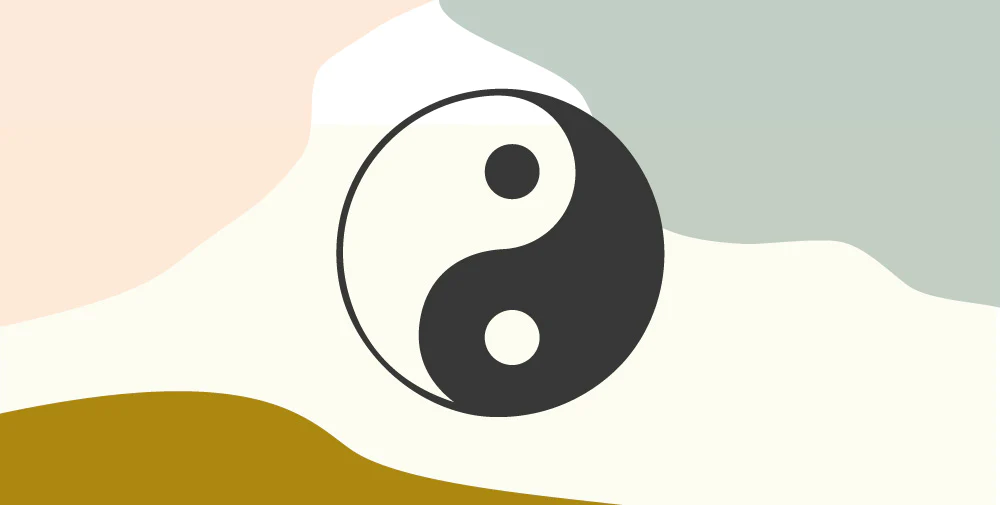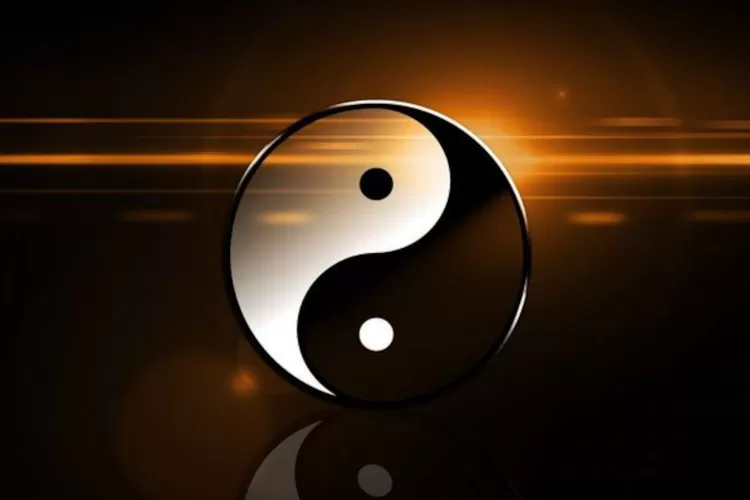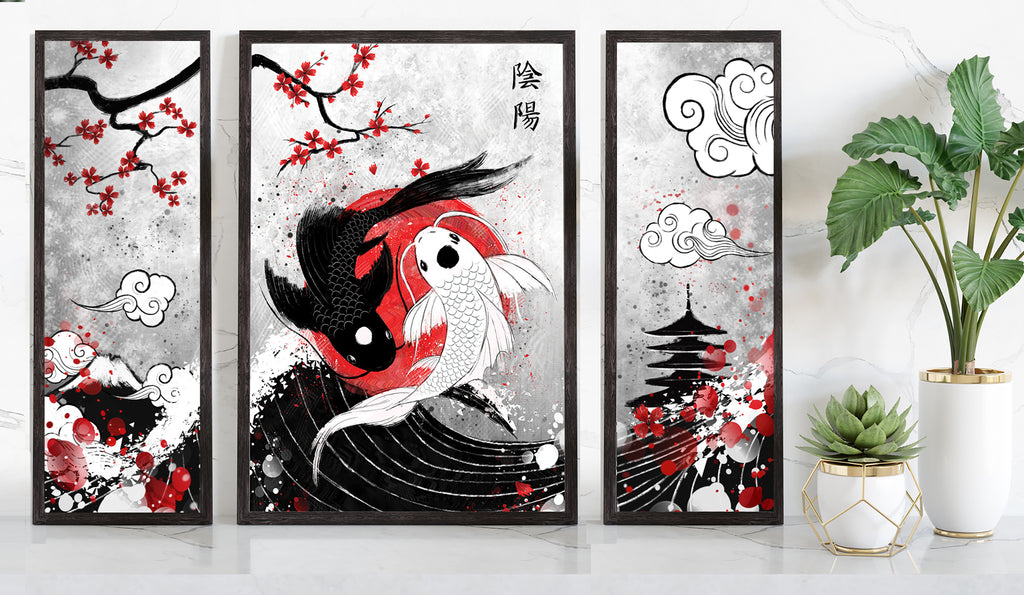
Yin and Yang
Yin and Yang, concepts deeply rooted in Chinese philosophy and culture, represent the dualistic nature of the universe. Originating from ancient Chinese texts such as the “Yijing” (Book of Changes) and “Dao De Jing” (Tao Te Ching), YinYang serve as fundamental principles guiding the understanding of natural phenomena, human behavior, and the cosmos. In this article, we will explore the essence of Yin and Yang, their significance, and their application in various aspects of life.

The Concept of Yin and Yang:
Yin and Yang are complementary forces that exist in a dynamic relationship of balance and harmony. Yin represents qualities such as darkness, coldness, passivity, and femininity, while Yang embodies qualities such as light, warmth, activity, and masculinity. Together, Yin Yang form a holistic worldview that acknowledges the interdependence and interconnectedness of all things.
The Symbolism of Yin and Yang:
The symbol of Yin and Yang, known as the Taijitu, depicts two opposing forces swirling together in a continuous cycle of transformation. The dark half represents Yin, while the light half represents Yang. Within each half, there is a small dot of the opposite color, symbolizing the presence of Yin within Yang and Yang within Yin, illustrating the concept of mutual interdependence danatoto.
Harmony and Balance:
According to Chinese philosophy, the ideal state is one of harmony and balance between Yin and Yang. When Yin Yang are in equilibrium, there is health, prosperity, and peace. However, imbalance or disharmony between Yin Yang can lead to discord, conflict, and suffering. The goal is to cultivate awareness and cultivate a harmonious relationship between the two forces.
Application in Traditional Chinese Medicine:
In Traditional Chinese Medicine (TCM), the principles of Yin and Yang form the foundation of diagnosis and treatment. Health is seen as a state of dynamic equilibrium between YinYang within the body. Imbalances are believed to manifest as symptoms of illness, and treatment aims to restore harmony by rebalancing YinYang through acupuncture, herbal medicine, diet, and lifestyle modifications.
Influence on Feng Shui:
Yin and Yang also play a significant role in Feng Shui, the ancient Chinese art of arranging the environment to promote harmony and well-being. Balancing Yin and Yang energies within the home or workspace is believed to create a harmonious environment conducive to health, happiness, and prosperity.
Conclusion:
Yin and Yang are profound concepts that offer insights into the nature of reality and the interconnectedness of all things. Embracing the principles of YinYang allows us to cultivate balance, harmony, and awareness in our lives, fostering health, happiness, and holistic well-being. By understanding and applying the principles of YinYang, we can navigate the complexities of existence with wisdom, grace, and resilience.
Exploring the Advantages and Disadvantages of Yin and Yang
Yin and Yang, the fundamental principles of Chinese philosophy, encapsulate the duality and interdependence of the universe. While these concepts offer profound insights into the nature of existence, they also come with their own set of advantages and disadvantages. In this article, we’ll delve into the strengths and weaknesses of Yin Yang, providing a balanced perspective on their significance in various aspects of life.

Advantages of Yin and Yang:
- Holistic Perspective: Yin and Yang provide a holistic framework for understanding the interconnectedness of all things. By recognizing the dynamic interplay between opposing forces, individuals can gain a deeper appreciation for the complexity and harmony of the universe.
- Balance and Harmony: The concept of YinYang emphasizes the importance of balance and harmony in life. By striving to maintain equilibrium between contrasting forces, individuals can cultivate physical, mental, and spiritual well-being.
- Flexibility and Adaptability: YinYang encourage flexibility and adaptability in response to changing circumstances. By embracing the cyclical nature of YinYang, individuals can navigate life’s challenges with resilience and grace.
- Health and Healing: In Traditional Chinese Medicine (TCM), Yin and Yang are central to the diagnosis and treatment of illness. By restoring balance between Yin and Yang energies within the body, TCM practitioners can promote health and facilitate healing.
Disadvantages of Yin and Yang:
- Simplistic Dualism: Critics argue that the concept of YinYang may oversimplify the complexities of existence by reducing phenomena to binary opposites. This dualistic thinking may fail to capture the nuances and intricacies of reality.
- Rigid Categorization: The categorization of phenomena into YinYang categories may be overly rigid and deterministic. Critics contend that this framework may limit individual freedom and creativity by imposing strict boundaries and expectations.
- Potential for Imbalance: While balance and harmony are ideal, achieving equilibrium between Yin and Yang forces can be challenging. Imbalances may arise due to external factors or internal disharmonies, leading to discord, conflict, and suffering.
- Misinterpretation and Misuse: The concepts of YinYang have been subject to misinterpretation and misuse, leading to misunderstandings and misapplications. Inaccurate interpretations may perpetuate stereotypes or reinforce harmful ideologies.
Conclusion:
Yin and Yang offer valuable insights into the nature of existence, providing a framework for understanding balance, harmony, and interdependence. While these concepts have their advantages, such as promoting holistic perspectives and fostering health, they also come with disadvantages, such as oversimplification and potential for imbalance. By critically examining the strengths and weaknesses of Yin Yang, individuals can develop a nuanced understanding and apply these principles judiciously in various aspects of life.
The Origins of Yin and Yang: Exploring Ancient Chinese Philosophy
Yinyang, two fundamental concepts in Chinese philosophy and cosmology, have a rich and ancient history dating back thousands of years. These concepts, which represent the dualistic nature of existence, have shaped the worldview of Chinese culture and influenced various aspects of life, from medicine and martial arts to feng shui and astrology. In this article, we’ll delve into the origins of YinYang, tracing their development and significance throughout Chinese history.

Ancient Roots:
The origins of YinYang can be traced back to ancient. Chinese texts such as the “Yijing” (Book of Changes) and the “Dao De Jing” (Tao Te Ching). Both of which date back to the early Zhou Dynasty (1046–256 BCE). These texts, which are foundational to Chinese philosophy, explore the principles of balance, harmony, and change, laying the groundwork for the concept of YinYang.
Cosmological Principles:
In Chinese cosmology, YinYang are fundamental forces that govern the universe. Yin represents qualities such as darkness, coldness, passivity, and femininity, warmth, activity, and masculinity. Together, Yinyang form a dynamic and complementary relationship, symbolizing the interconnectedness and interdependence of all things.
Symbolism and Iconography:
The symbol of YinYang, known as the Taijitu, is perhaps the most recognizable representation of these concepts. The Taijitu depicts two opposing forces – YinYang – swirling together in a continuous cycle of transformation. The dark half represents Yin, while the light half represents Yang. Illustrating the concept of mutual interdependence and the cyclical nature of existence.
Philosophical Foundations:
Yin and Yang are central to various schools of Chinese philosophy, including Daoism, Confucianism, and Chinese Buddhism. These concepts provide a framework for understanding the nature of reality, human behavior, and the cosmos. They emphasize the importance of balance, harmony, and moderation in all aspects of life, encouraging individuals to cultivate virtues such as humility, compassion, and wisdom.
Cultural Influence:
Throughout Chinese history, YinYang have permeated every aspect of culture, influencing art, literature, religion, and governance. They have played a significant role in traditional Chinese medicine, where they are used to diagnose and treat illness, as well as in martial arts, where they are incorporated into techniques and strategies.
Continued Relevance:
Today, Yin and Yang continue to be relevant concepts in Chinese culture and beyond. They offer insights into the interconnectedness of all things and provide a framework for understanding the complexities of existence. Whether applied to personal relationships, social dynamics, or global phenomena, YinYang serve as a timeless reminder of the fundamental principles that govern the universe.
Conclusion:
The origins of Yin and Yang can be traced back to ancient Chinese texts and cosmological principles. These concepts, have shaped the worldview of Chinese culture and influenced various aspects of life. Today, YinYang continue to be relevant concepts, for understanding the complexities of existence.
Baca Juga Artikel dari “McDonald’s Revives Beloved Classics and Welcomes McAloo Tikki to U.S. Menus: A Feast of Nostalgia and Innovation.“








